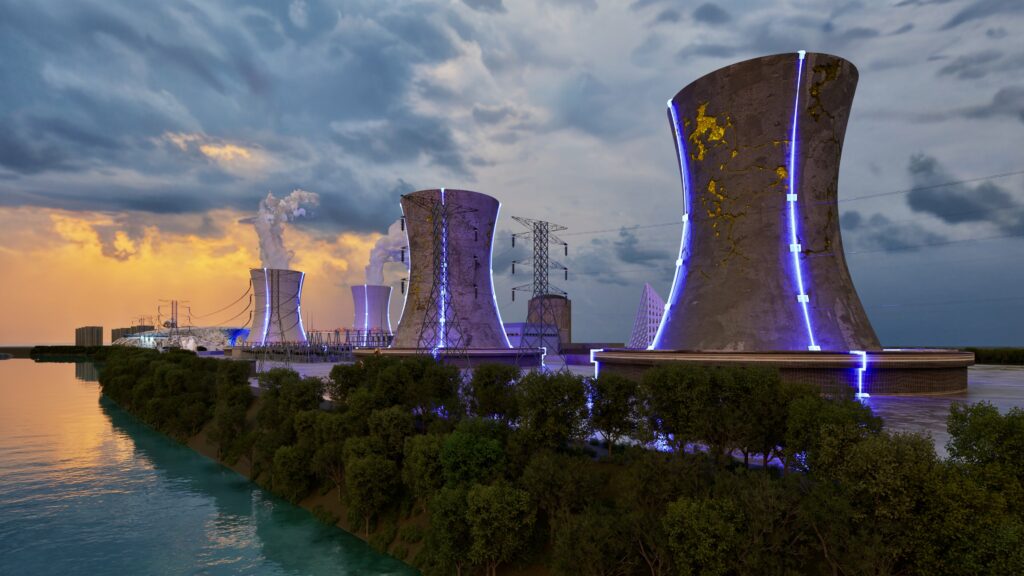A RADIANT FUTURE
March 22 – June 20, 2025
Opening Reception: March 22 at RIP Space, 6-10pm
Claudia Brăileanu | Ceren Su Çelik | Chris Coleman | Harriet Davey | Sophie Kahn | Parag K. Mital | nouseskou | Yoshi Sodeoka

A RADIANT FUTURE brings together eight internationally acclaimed artists who envision a new promise for tomorrow. The exhibition unfolds within a speculative 3D simulation of Three Mile Island, the site of the worst commercial nuclear disaster in U.S. history in 1979. No longer a relic of catastrophe, the island is reimagined in 2028 as both an energy hub and an art destination, reflecting a future where history, industry, and creativity converge. This vision positions the site as a semi-operational power supplier under contract with Microsoft, feeding the tech giant’s ever-expanding cloud computing and artificial intelligence infrastructure. What was once a symbol of crisis is now a node in the machinery of technological progress—proof that even disaster has a half-life when there’s data to process.
This exhibition considers the shifting nature of industry, energy, and historical narrative. If the meltdown of 1979 represented the dangers of unchecked ambition, this version of the island suggests a different kind of high-stakes wager—one where the past is repurposed to serve the needs of an insatiable digital economy. The artists examine not only humanity’s place within this accelerating transformation but also the ways in which nature is rewritten, reengineered, and redefined. The landscape of Three Mile Island, once shaped by nuclear disaster, now serves as a testament to how technology subsumes the natural world, integrating it into a vast and abstracted system of energy, data, and infrastructure.
With a wry nod to the way historical sites are repackaged for modern utility, A RADIANT FUTURE presents a world where data is the new uranium, AI the omnipotent reactor, and corporate visionaries the new stewards of our collective past. In this near-future, progress is not just about power generation—it is about narrative control. History doesn’t merely repeat itself; it is reformatted, optimized, and uploaded to the cloud.
Shana Nys Dambrot, “13ThingsLA: March 19,” 13ThingsLA, March 18, 2025.